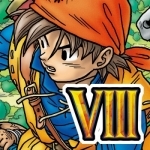
Weather Mate - Forecast, Radar, Maps, Alerts
Weather and Utilities
App
Say Hello to your new Mate - Weather Mate. The most accurate and beautiful weather app on the...

3D Makeover and Dress Up Games for Girls
Lifestyle and Games
App
*** Write your own fabulous fashion story! *** ** Get ready for the most spectacular 3D fashion...

Accountant Universal Calculator
Finance and Business
App
Accountant Universal Calculator, for iPad and iPhone, is the perfect calculator for general everyday...

Blackbox Pro for Dreambox, Vu+, Xtrend, TVHeadend and Others
Entertainment and Utilities
App
* SPECIAL DISCOUNT FOR A LIMITED TIME ONLY * Buy Blackbox today and you get the Blackbox 3 upgrade...

StockWatch - Portfolio Tracking & Stock Quotes
Finance
App
StockWatch is the best App to keep an eye on the stock market, track your portfolios and holdings,...

MyFLO Period Tracker by FLO Living LLC
Health & Fitness and Lifestyle
App
MyFLO is the first-ever period tracker and fertility app that tells you what to do to be...

Christ In Song
Music and Book
App
We are pleased to present the Christ in Song hymn treasury. These hymns are hand-picked for their...

Ukulele Toolkit - Tools of Tuner and Chord for Uke
Music and Utilities
App
EUMLab Ukulele Toolkit is a collection of tools amounting to everything an aspiring ukulele player...

DRAGON QUEST VIII
Games
App
[Recommended Hardware] iPhone 5 or Higher/iPad (3rd Generation or Better) Please Note: iPhone 4 is...
